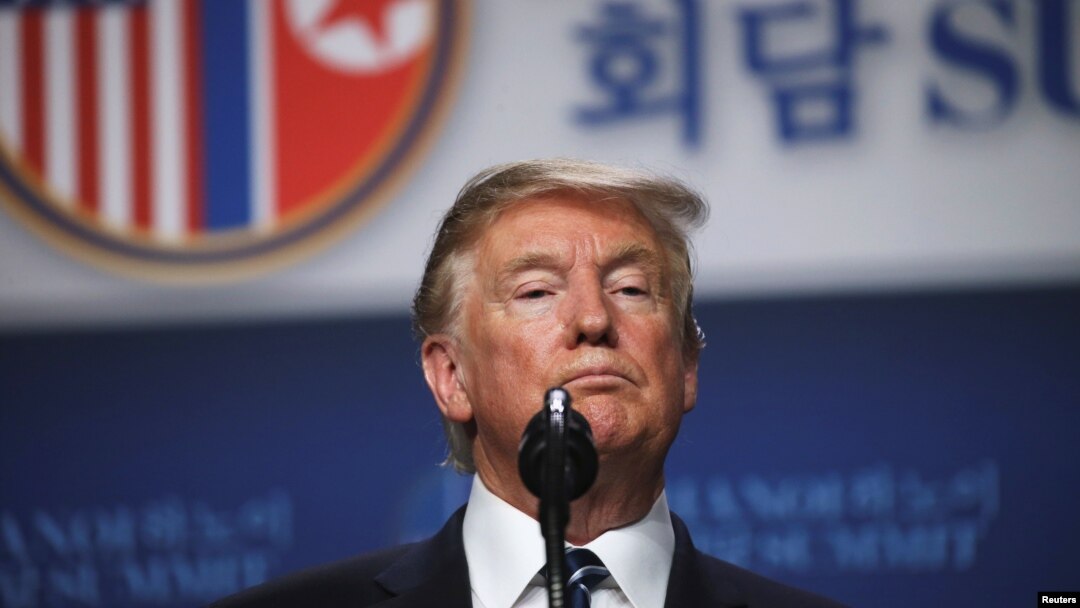As U.S. President Donald Trump talked about his decision to walk away from a possible historic agreement with North Korea Thursday, he warned that Washington could do the same with Beijing.
China and the United States have said they are making real progress in their efforts to resolve deep differences over trade. Late last week, talks that were supposed to end on Friday, went on until Sunday. And President Trump has agreed to delay a hike in tariffs on $200 billion in Chinese goods, a deadline that was originally set for Friday.
SEE ALSO: Implementing China Trade Deal Will Be Next Big Challenge for USThe two sides are working hard, officials say, and plans are under way for Trump to invite his Chinese counterpart, Xi Jinping, to meet at his Mar-a-Lago home in March.
However, there are also concerns that the two may not be able to bridge their differences over what China should do to further open up its economy.
That much was apparent from Trump’s remarks during a press conference on Thursday in Hanoi. Following an abrupt change in the schedule that was originally expected to end with a signing ceremony, the president said that much like the talks with North Korea in Vietnam, trade talks with China could go either way.
“Speaking of China, we are very well on our way to something special, but we’ll see,” Trump said. “I am always prepared to walk. I am never afraid to walk from a deal. And I would do that too with China if it didn’t work out.”
In remarks to reporters, Trump highlighted the role that he said China was playing in helping advance denuclearization on the Korean peninsula and could play if Pyongyang drops its nuclear ambitions and embraces economic development. China was discussed during their meetings, he said.
SEE ALSO: Key Points From Trump’s Press Conference in Hanoi“We did talk about China today, a lot,” Trump said. “He’s (Kim) getting along with China and so are we.”
What they discussed specifically, the president did not say. He did note the tremendous support China gives to North Korea economically, but added that North Korea was calling the shots and not taking orders from anybody.
Much like the divisions that Washington has with Pyongyang over what steps need to be taken before sanctions should be removed, there are concerns that China’s leaders are not willing to go far enough in responding to U.S. demands for structural reform, such as ending generous state subsidies of Chinese firms, forced technology transfers and obstacles to market access.
Liao Qun, chief economist with CITIC Bank international, said Beijing was likely to take Trump’s remarks in stride, noting that China has gotten used to his tactics. What Trump’s remark means, he said, is that the deal still isn’t 100 percent closed.
“Like Trump has said, there’s a possibility that there won’t be a deal. So, let’s not be too optimistic and let down our guard,” he said, noting that some may have been getting overly optimistic following last week’s talks, the delay of the deadline and Trump’s floating of possible meeting with Xi Jinping.
“Overall, I think both countries are moving toward a positive direction,” Liao said, adding that it also seems like U.S. officials are trying to cool down sentiment and expectations.
U.S. Trade Representative Robert Lighthizer testifies before a House Ways and Means Committee hearing on U.S.-China trade on Capitol Hill in Washington, Feb. 27, 2019.
President Trump’s top negotiator, U.S. Trade Representative Robert Lighthizer, told Congress on Wednesday that a new trade deal with China was not close to being completed.
“If we can complete this effort, and again I say if, and if we can reach a resolution on the issue of enforceability, we might have an agreement that enables us to turn the corner in our relationship with China,” Lighthizer said.


